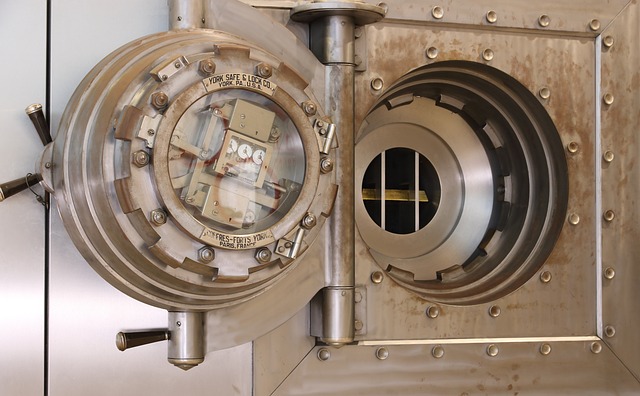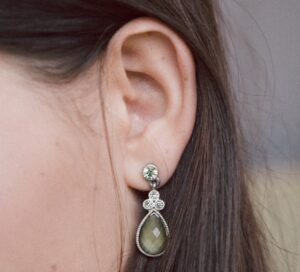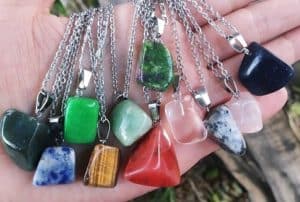We love to buy new jewelry and build an exquisite collection of stones as well as precious metals. It becomes crucial to safeguard this investment especially when we have invested a good amount of our income in it. Getting our jewelry insured is imperative even if we do not own a lot of expensive items. Most of us own an engagement ring and it is normally expensive and is also most prone to lost or damage. Therefore we must get in insured.
While we have discussed that getting your jewelry insured is crucial, most of us refrain from getting it done thinking it is going to be expensive. But, is it?
Well most jewelry insurance costs between .5 to 2% of your jewelry cost. This cost is paid annually and varies based on a lot of factors. These factors include the overall safety of your jewelry from getting damaged or stolen. Insurance would cost less if your jewelry remains in a secure environment and the cost will be higher if the threat of loss or damage is higher.
Let’s delve deeper into the financial aspect of jewelry insurance and understand what factors affect the cost. But before we begin, let’s look at what jewelry insurance actually is and what it includes.
What does it mean to insure jewelry?
Getting your jewelry insured means, going into a contract with an insurer. Here, you pay a certain amount of monthly or annual insurance premium. In exchange, the insurance provider will pay you certain amount of money, or assistance in getting your jewelry repaired or replaced. It is fundamentally a cover or protection against your expensive jewelry items. The insurer replaces, assists with repair or provides cash as per the terms of the agreement in case the agreed upon scenario materializes.
Jewelry insurance mostly covers items made out of precious metals and stones like rings, necklaces, anklets, bracelets, watches, forehead jewelry, earrings etc.
It is essentially a risk cover that people opt for to protect the jewelry they own. This type of policy commonly covers robbery, theft, burglary, fire, and natural calamities, accidents, but a good policy will cover an even wider range of threats. The scenarios are mentioned in the policy document.
There are majorly three types of insurance to get your things covered:
- Homeowners insurance or renter’s insurance: These are the insurance one gets to protect the stuff he/she owns within the house. This has a provision for jewelry insurance, but only up to a limit. i.e. most items in this category have single-item insurance. Normally, there is a cap to the amount you may claim for one item. This amount varies based on plans and insurance providers. If the amount for single item is less than the value of your jewelry, you should opt for some other type of insurance, or a different plan. This insurance works best for individuals that have expensive items at home like antiques, collectibles, expensive electronics etc.
- Floater insurance: These are in addition to the existing insurance that one holds in case one doesn’t feel the need to get a new one. You may ask your provider to add floater insurance to your existing one. This is mostly customizable and the amount may also be changed based on individual requirements.
- Stand-alone insurance: This refers to completely new insurance if one holds the jewelry beyond the one specified in the homeowners or renters insurance. One can opt for this to enjoy the customized benefits offered by the company. It is best suited for your specific jewelry insurance requirements as home owner insurance may only help you cover a fraction of the cost.
Having said that, you may decide on getting your jewelry insured in one of the two ways:
- Insuring individual items (Scheduled insurance): This will insure each item individually based on it’s value. For such pieces, have appraisal of value every two years as value of precious stones and metals keeps changing. This makes it the best kind of insurance for high value jewelry items.
- Insuring all items (Blanket insurance): This will insurance the entire jewelry collection. Each jewelry item will have a max-limit. However, you must have proof of ownership, pictures of all the items you own.
How does jewelry insurance work?
Just like any other insurance, you need to go through a process to get your jewelry insured. Next is the process of maintaining the policy and paying premiums. Additionally, you may need to get a claim, then, we go for claim settlement. Let us look into it in detail.
- Select a policy: Firstly, you should know how much your homeowner’s insurance or renter’s insurance limit is (if any). Evaluating this, you may also decide to go for a rider or stand-alone insurance plan. You must look for the best policy that covers a range of threats to protect your belongings.
- Valuation or appraisal: Get your jewelry appraised. Most insurance providers will need it in order to evaluate the cost for your policy. You may also need it in case you file a claim.
- Get the documents ready: Check for the documents required with the provider. Most providers would need receipts, appraisal documents, some pictures of your jewelry. You need to collect the required documents and submit to the insurance provider.
- Pay the premium: The next step is to pay your first premium for your policy to become active. Normally, the insurance starts from the day you pay your first instalment. You may check the laws of your area. Now you need to pay the monthly or annual premium for your policy.
- Call for claim: The unfortunate theft or accidental damage has happened to your jewelry. Well, fret not! This is the day you bought you got your jewelry insured for. You will have to make a claim call with the insurer.
- Claim settlement: Based on the terms of the policy, the insurer will assist in repair or replacement of your jewelry item. The amount the insurer pays normally depends on the last appraisal value. Some of the insurers pay 125% of the value if your item has appraised further. Most of the companies these days request for a proof via a picture of the item in order to start the process. However, the intricacies of this will depend on the terms of your contract.
- Inform the company in case of reversal: In a scenario where you found the lost belongings after the claim, it is your responsibility to inform the agency/company. Otherwise, you might end up in jail for insurance fraud. Here, you will have to either return the amount or the replacement bought with it.
Can you insure a piece of jewelry?
Yes you can. Getting single items insured is known as scheduled or individual insurance. A lot of individuals just get their engagement or wedding rings insured. If you believe you have an item of higher economical or sentimental value to you. Also, you feel you would not be able to replace it with your income in case of damage or theft, you can get just that single item insured. A lot of insurers however insure goods with a value of over $10,000. Some offer insurance of items over $5000-$6000 as well. You may check with insurance providers.

Is it expensive to insure jewelry?
While it is not, being expensive or affordable depends on what you are willing to pay. Normally, the cost revolves between .5-2% of your jewelry annually. E.g. If you own a ring worth $10,000, the insurance cost can be anywhere between $5-$18 a month.
The cost of the varies as multiple factors contribute to the end cost. Some of these factors are:
- The quantity that one is ready to pay the premium for: All the jewelry that the owner is ready to insure is to be listed before preparing the contract. The cost of insurance will now depend on the type of insurance you go for. ike we discussed, you may go for scheduled or umbrella insurance.
- Value at the time of insurance: An appraisal report is a document used to ascertain the cost of listed products at the time of insurance. The higher the cost of the item, higher the premium.
- Your previous mysterious disappearance claims: If you have made claims under “mysterious disappearance” in the past, an insurer may charge higher premium from you. Even worse, you may be denied insurance.
- Claim settlement ratio: It refers to the ratio between the rate of the claim paid against claims filed. This means that the high the ratio is, the better it is for the insured. Therefore, normally, insurance providers that have a better claim settlement ratio, charge slightly higher premium.
- Your profession: Yes, some insurers check the profession of the insured as well. It might be surprising to know, but an insurer may deny insurance to someone in the entertainment industry or to an athlete. This is due to the higher risk of damage or loss in some professions.
- Exclusion: It includes all the activities or factors under which the insured can’t file the claim. More the exclusions, lower would be the cost.
- Validity outside the nation: In case you’re traveling abroad and misplace your jewelry or got looted there, this scenario comes into picture. Now, whether you would get a claim or not, depends on the international or travel coverage of your provider.
- The probability of theft or damage: The safer your jewelry is, the lower you pay in terms of insurance premium. If you keep your jewelry in your house and your house has a good security system, the premium for jewelry insurance will be low. On the contrary, you may have to pay a higher premium for your engagement or wedding ring that you wear every day as it has higher changes of getting damaged or stolen.
Is jewelry insurance worth it?
It depends on the value of items you own. If you just own one or two items and their cost is under the single item value in your home owner’s or renter’s insurance, then there is not use of getting a separate jewelry insurance.
However, the answer would be a definite yes if you own single or multiple items of high value. If the value is high enough for you to replace in case of damage or robbery, then it is worth getting jewelry insurance. It could offer you protection not just against robbery, chain snatch, burglary, but also against mysterious disappearance, accidental loss, theft while traveling internationally, and all other kinds of stuff. No matter if the jewelry is at your house, bank locker, transit, or at an exhibition. If your policy has the required terms and conditions, they got it all covered.
Now that we are talking about the terms and conditions, let us look at some of the things most of the insurance companies exclude. You must check these with your provider when you are finalizing on the terms.

Exclusions
Exclusions of the policy is something you must know when buying jewelry insurance. You must also compare the exclusions from policies of different jewelry insurance providers. Buy a policy only if you are comfortable with the exclusions.
- Damage caused due to carelessness
- Routine wear and tear
- Exchange or sale of the subject without informing the insurer
- Anything that is not mentioned or disclosed at the time of buying the insurance.
- In case of confiscation
- Any burglary involving member(s) of the family or a guest you invited to your home
- items considered as misplaced instead of stolen
These are the general circumstances that make it invalid for the insurance holder to file a claim. Though they are the basic ones, they can vary from firm to firm.
Things to keep in mind while selecting a jewelry insurance
Let us look at some of the things you can do to ensure that you are selecting the right insurance provider and the best insurance policy available. Check for:
- Number of exclusions: The policy should have least exclusions and you must be okay with all the exclusions mentioned in the policy document.
- Coverage: It should offer protection from a large number of threats. Look for things like mysterious disappearance, theft, accidental damage etc.
- Geographical restrictions: Check for the geographical boundaries of the applicability of the policy. You must know if you will be covered when you are traveling outside the country.
- Low premium: The premium you pay should be the lowest with the same set of coverage and exclusions
- Claim settlement Ratio: It should be high
- Ask questions: Clear all other doubts you may have to get the most out of your insurance.
Best insurance companies
Let’s now look at some of the popular jewelry insurance companies and what benefits they offer their clients.
| Companies | Types of policies | Coverage | Prices* | Exclusions | Strengths |
|---|---|---|---|---|---|
| Jewelers Mutual Insurance Group | Multiple policies | Varies | 1-3% | •Nuclear hazard or war. •Left on an unattended vehicle •Regular wear and tear •Excludes damage from critters •Intentional loss/damage | •Great claim settlement ratio •Most insurances are processed without appraisal documents |
| Lavalier | Multiple policies | up to $50,000 per piece | 1-2% | •Manufacturer's defect. •Intentional loss. •Nuclear hazard or war. | •Reasonable pricing and amazing discounts •You may avail security and gemstone grading discounts •Availability of an unscheduled jewelry endorsement |
| JIBNA Personal Jewelry Insurance | Standalone jewelry insurance program | Varies | 1-2% | •Manufacturer's defect. •Intentional loss. •Nuclear hazard or war. | •All risk coverage, including mysterious disappearance •Minimum premium is $50 |
| Gem Shield | Multiple policies | $100,000 maximum | .5%-1% | •Manufacturer’s defects. •Intentional loss or damage. •Nuclear hazard or war. | •Smooth Application Process •Response time is within minutes •Online application for claims or policy amendments |
| BriteCo | Multiple policies | up to $150,000 per item and $500,000 per policy | .5-1.5% | •Any prior damage to jewelry •Regular wear and tear •Intentional loss | •Covers preventive maintenance •Covers for up to 125% of your jewelry’s original appraised value •Allows co-insured persons to be added in the policy •You may get amazing prices for engagement rings without deductibles |
| WAX | Multiple policies | $1 million or more | 1% | •Any prior damage to jewelry •Regular wear and tear •Intentional loss | •It is very easy to modify the jewelry items you have insured via app •You may receive up to 150% of appraised value •You will only be required to appraise items over $100,000 and above •Offers white glove concierge services |
* Price is the percentage of jewelry value you need to pay as premium annually

Bank vaults vs insurance
You may be thinking why to buy insurance and pay premiums when you can store your precious jewels in the bank lockers? The answer to this is because:
- You can use your jewelry without the stress of loss or damage (but with caution). You cannot keep your engagement ring the locker. You will wear it, right?
- Banks aren’t responsible if your things get damaged due to fire or any calamities while stored in lockers.
- Bank locker offers less paperwork but, at the same time, compromises safety.
- Variety of plans and options to choose from ensuring maximum financial safety to your jewelry.
- Bank lockers, just like insurance, are not free. You will have to make payment to the bank for storing your jewelry in a locker. Similarly, you pay the insurance premium to the insurance provider in this case.
Documents required to file a claim
You may need the following documents when you file a claim for your jewelry to your insurer.
- Evidence: Some agencies ask for relevant evidence of subject material or theft (in case)
- Police reports: A copy of the complaint report filed with the police in case of theft or burglary.
- Pictures of the jewelry: You would need pictures of the jewelry if it has been damaged. The picture should clearly show the extent of damage. These are more important in case of an umbrella insurance in order to identify the item damaged, lost or stolen.
- Documents of stolen jewelry: Various documents related to the jewelry such as invoices, appraisal documents and insurance papers to prove the ownership.
- Value appraisal: The document includes the value of the lost jewelry. These should be available with you from the last appraisal carried out. If they were not submitted to the insurer, they can obtained from the shop it was originally bought from post presenting the invoices.
- Diamond grading report: A certificate ensuring the quality of the diamond from your lost belongings in case the claim involves diamonds.
Claim procedure
Now, here are the guidelines to follow in order to file a claim for the insurance.
- Notify the insurance agency/company about the loss or damage ASAP. Also, write an email to report to the company.
- It’s better to inform the relationship executive mentioned with the insured.
- Then, the provider normally sends a surveyor to examine the scenario and investigate to prepare a report.
- Present all necessary documents asked by the surveyor to promote a transparent investigation and fill the necessary forms.
- Whatever the case was, present proper documentation to support your statement.
- After performing the overall investigation, a final report consists of the potential loss and compensation amount.
- The insurance company may ask for a copy of the insurance policy.
- You might find the option to check the claim status online, and after all the paperwork and tasks completed by the agency, you’ll receive the compensation amount. With this amount, you may repair or replace your item.
General guidelines
Before ending, here are a few tips for you that might help you while buying your insurance.
- Generally, insurers offer discounts or other offers to the customers who buy multiple insurances from them.
- Get your wedding ring insured apart from the rest of the jewelry, as it’s in everyday use.
- In case you don’t own homeowner’s or renter’s insurance. You have an opportunity to get flexible insurance from a brand specialized in jewelry insurance.
Final words
Jewelry is highly valuable, small and portable. This is being valuable and easy to snatch or rob from someone, becomes an easily available material for theft. Regardless of where you are or whether you keep your jewels at home or in a bank vault, there is always a possibility of getting robbed or your jewels getting damaged. Also, like we said, if you own expensive jewelry items, it is best to get them insured.
Thankfully, there are many insurance providers that offer amazing plans. Most of these plans are customizable based on various factors. Thus, keeping you financially secure if things do not go as planned.
I hope the above helps you find the best provider and the right plan for your requirements. Good luck! Cheers!




